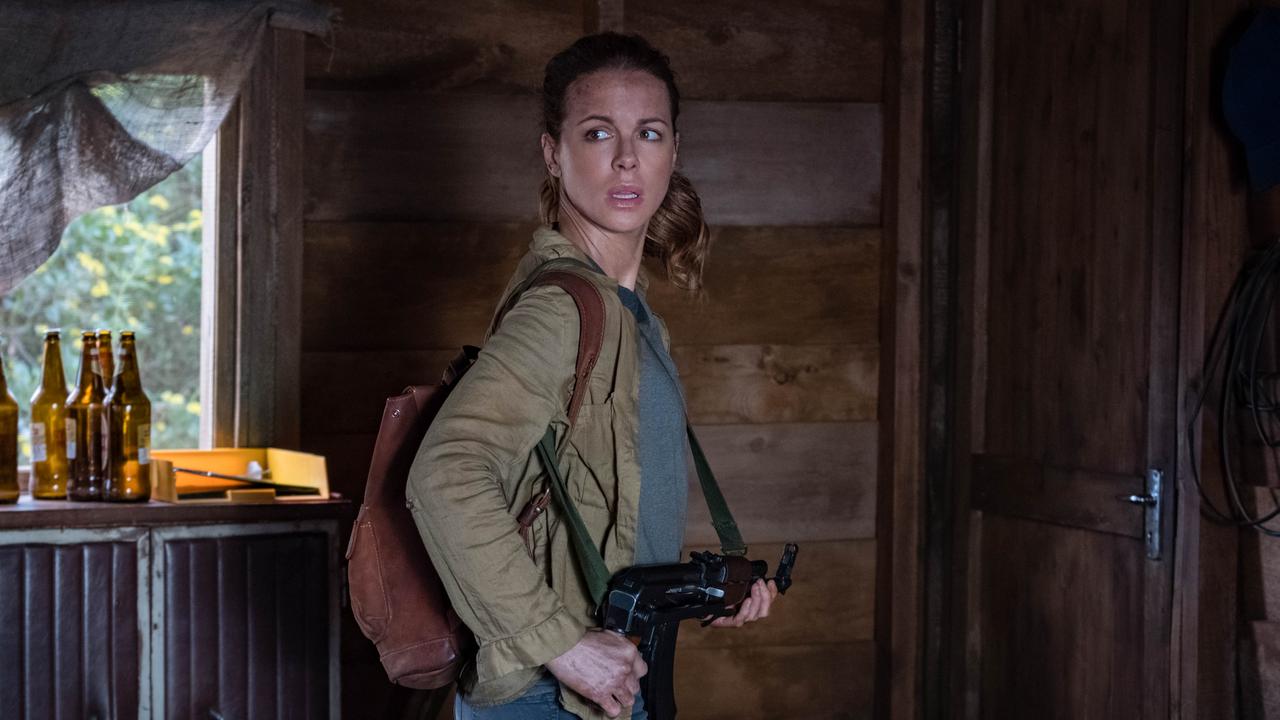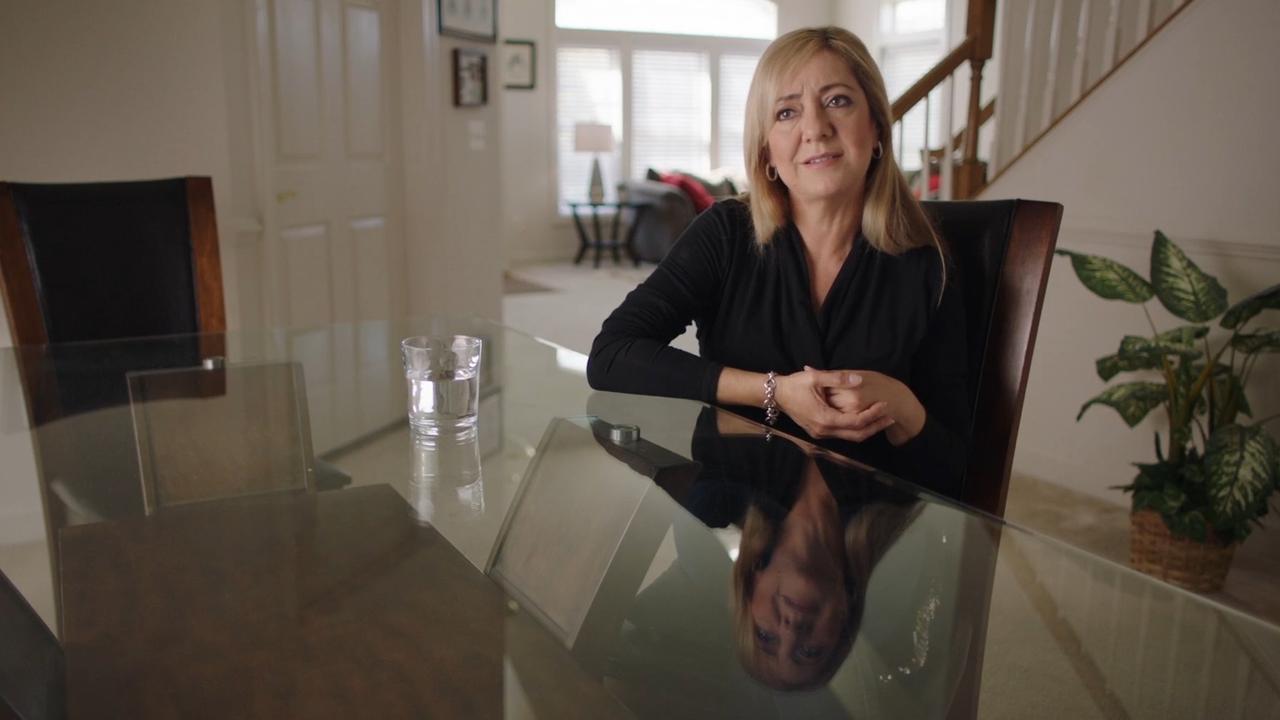That was the year that was
There may have been more to look at and less to see, but Australian-made programs came out of it well
There may have been more to look at and less to see, but Australian-made programs came out of it well
IT was the year the contest between a few free-to-air television channels, subsidised by almost endless, increasingly strident advertising, and an avalanche of new pay channels based on subscription became even more intense.
It was easy to tell it was an increasingly frantic battle. New shows on the commercial channels came and went with such alacrity it was hard to remember if you had seen them when they were mentioned in conversation. And sometimes commercial TV seemed like just one long, loud advertisement, so frequently were we bombarded by commercials as the networks tried to grab every last dollar.
The long-time staples of TV advertising - effective and well-made commercials - were subsumed in a paranoid and cluttered media space. The viewing landscape, so sedentary for so long, changed with disorienting speed in a frantic 12 months.
The year started with just five free-to-air channels but 12 months later there were 16 multi-channels, including ABC2 and ABC3, SBS Two, Ten's ONE HD, 7Two and Nine's Go! The trouble is, with the exception of the ABC's outlets, most inoffensively offer broad entertainment titles, most of which have already been recycled seemingly dozens of times.
Commercial TV, while it never wanted anyone else to have digital free-to-air TV capacity, has been overwhelmingly uninterested in the innovative capabilities of the digital platform.
Innovation on local TV through the year has been led by the pay platforms and, in recent years, under the astute leadership of managing director Mark Scott, the ABC. Not content to be what Scott calls "a legacy broadcaster", the ABC has developed a kind of transformational thinking, delighted to find new audiences in new ways.
Just like the rampaging pay outlets. There are more than 200 channels across their schedules, intensifying the experience of storytelling in a way without cultural precedence. Foxtel's heavily promoted Next Generation has created an exciting new viewing experience, with its IQ2 digital set box recording units selling visions of how to creatively manage TV: finding it, storing it, rescheduling it to play at leisure.
Search is increasingly everywhere in our TV lives, invading every form of information retrieval. It's a democratic form of inquisitiveness that threatens to undermine TV advertising and has almost seen off TV by appointment. It's as if pay TV has launched a crusade against the received wisdom (will it ever leave us?) that TV corrupts our children, alienates us from our communities and that there's never anything good on the box.
This year there certainly was, the best of it locally produced. Many imported shows, especially from the US, were disappointing except for ABC1's edgy and often hysterical United States of Tara, Ten's Nurse Jackie and Seven's FlashForward.
The year started sensationally with Nine's Underbelly: A Tale of Two Cities, following in the rear-view mirror of the first instalment of the highly successful true-crime show.
The untidy truths about another slice of our criminal history were nudged by Underbelly's smart storytellers (Greg Haddrick produced; Ken Cameron directed) into a slightly artificial shapeliness that quickly became highly addictive.
I was expecting again that tabloid intermingling of the mundane and the heinous delivered by the first series, and the oddly affecting portrayal of the breathtaking stupidity that propels most homicidal actions. This prequel series delivered it, after an almost leisurely start established a profligate ensemble of psychopaths.
SBS's East West 101 also returned. It's a seductive, intelligent and often abrasive procedural police series, confirming itself as the most cinematic crime show we've produced so far. Co-creators Steve Knapman and Kris Wyld pushed their detective hero Art Malik (superbly portrayed by Don Hany) into even more sophisticated narrative territory this time.
They tweaked the conventions of the traditional local TV cop show with parallel stories and a longer plot arc. And what was a pungent detective thriller segued into the espionage genre, where conspiracy takes the place of the killer in a murder story.
SBS brought back The Circuit, a series of compelling originality. It spins some of the conventions of TV courtroom drama and cop show by wrapping them up in a culturally complex family saga. Set in the Aboriginal frontier towns of far north Western Australia, The Circuit's stories juxtaposes the private against the public authority that steps in with prosecution, conviction and punishment.
For all the moral and social confrontations The Circuit evoked, it was made with a kind of devoted tough love and compassionate humour that avoids mawkishness while cutting to the emotional heart of its concerns. These fine local dramas all played with genre and expectation, taking risks with form and narrative style. In a year of an increasingly atomised audience, many of whose viewing habits don't even involve a TV set, they provided triggers for many to attach themselves to single shows.
As was the case with the year's surprise hit, Ten's MasterChef Australia. The cooking series was so successful it has spawned copycat versions across the networks next year. Loosely based on the successful BBC program of the same name, MasterChef Australia infused the traditional cookery show with the confessional staples and competitiveness of reality TV.
Ten was so evangelical about this show it gave me the feeling the network believed local TV was reinventing itself with this culinary demo program; that it was a kind of therapy for the beleaguered nation coming off a recession. Presenter Matt Preston arrived as a big new presence on our screens.
Comedy was the other big winner this year. Shaun Micallef's Talkin' 'Bout Your Generation, Ten's inter-generational quiz-style game show, provided the comic with his best vehicle so far. Micallef works brilliantly in this show, as funny and unexpected with his asides and comic diversions as Graham Kennedy at his peak.
Much of his comedy arises from a mournful sense of self-recognition, as if he can't really believe he is making people laugh. Other comics call him Australia's leading slapstick intellectual and they are right; he exploits his weaknesses, along with his erudition, in an uninhibited mixture of physical farce and verbal surrealism.
The big hit of last year, Seven's Packed to the Rafters, is still huge, smoothly turned into a nicely paced character-based comedy-drama (or perhaps domestic melodrama), constructed from the comings and goings of family relationships with just enough controversies to keep it spiced up. Rafters has taken up residence in the home of unchanging, classic conservative Australian values, much as Seven's Blue Heelers did several years ago and it will be with us probably as long.
Increasingly entrepreneurial, pay TV aired a couple of great new local comedies through the year. Each had wonderful scenes of exuberance but there were many confronting moments.
Compulsive talker cum joker Mick Molloy played superannuated comedy legend and TV svengali Dave Davies in Movie Extra's eight-part The Jesters, corralling a fractious group of young comedians to TV stardom. Molloy was brilliant. Like his wonderful applause-anxious creation, with his irrepressible ping-pong dialogue and joke-mangling diction, Molloy strikingly refuted the misguided theory that the prerequisite of great comics is pathos. He was full-on, bombastic and wonderfully over the top.
The Comedy Channel's advertising satire :30 Seconds was often brilliant, too, ostensibly a kind of observational situation comedy set in and around the fictional world of agency BND Worldwide. Almost like a sketch show at times, :30 Seconds satirised advertising's psychological manipulations and presentational tricks and the way its practitioners handle crossing complex ethical boundaries.
But the most laceratingly funny show was inevitably the ABC's John Safran's Race Relations, in which the Jewish comic indulged his long-term personal obsession with cross-cultural, interracial and interfaith love. His eight-part doco-comedy series is his most ambitious project, stylishly directed by his long-term collaborator Craig Melville and co-written by his friend Sofija Stefanovic, herself an accomplished filmmaker.
Race Relations was produced by Racer Pictures, the company formed by Safran and producer Laura Waters, who was Chris Lilley's co-producer on the remarkable Summer Heights High.
There was a similar humour of social embarrassment at work, though Safran is more malevolent, even insidious, than Lilley. Safran has achieved the depth of individuality and intrinsic funniness of the great comedian and has developed a distinct idiom in a short time. His attitude to audience, material and the outside world is a universe apart from most local TV comics, excepting Micallef.
Safran's barbed, sophisticated humour operated in a parallel universe to the biggest surprise of the year: the extraordinary success of the revival of Daryl Somers's Hey, Hey, It's Saturday. It was another painful piece of celebrity TV in which the boundaries between life and art, stars and fans, authorship and spectatorship were inadvertently deconstructed for their humiliation and embarrassment content.
Praised for bringing back wholesome family entertainment, to me it seemed like an electronic version of those now vanished carnival shows that featured lascivious midgets, conjoined twins, bearded ladies with three breasts and elephant men.
But, yes, we loved it, the tackiness, the badly ageing faces, the phony reactions, the humourless, disembodied jokes of the host, to say nothing of the infamous blackface sketch. The show balanced so precariously on the edge of parody it was as if it were written by a cynic on Prozac. Somers's comeback demonstrated that even in a year when TV made a commitment to relentless technological innovation, some things just never change on the box.


